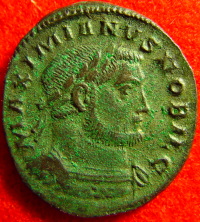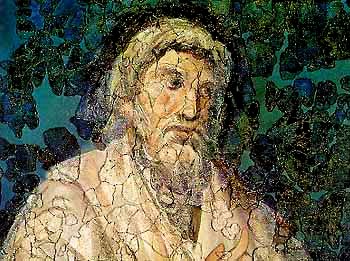|
Battle Of Satala (298)
The Battle of Satala was fought in 298, in Armenia, between the forces of the Roman Empire under the Tetrarch Galerius and the forces of the Sasanian Empire of Persia led by Shah Narseh (Narses). The battle was an overwhelming victory for the Roman army, with the Persian army destroyed as a fighting force. The Romans obtained an enormous amount of plunder from the defeated Persians, and captured Narseh's principal wife. The campaign concluded with a very favourable peace treaty for Rome, with Persia ceding considerable territory. Location Though traditionally known as the Battle of Satala, the precise location of the battle is not known; the town of Satala may have served as the Roman base of operations. In an early Armenian history it is stated that the battle was fought in the region of Basean, at a village called Osxay. Basean (Phasiana) is usually placed to the east of Erzerum.History of the Armenians by Faustus of Byzantium, Book 3.21.72 Background In 295 or 296, Narseh d ... [...More Info...] [...Related Items...] OR: [Wikipedia] [Google] [Baidu] |
Tiridates III Of Armenia
Tiridates III ( Armenian: Գ ''Trdat III''; – c. 330), also known as Tiridates the Great ( hy, Տրդատ Մեծ ''Trdat Mets''), or Tiridates IV, was the Armenian Arsacid king from c.298 to c. 330. In 301, Tiridates proclaimed Christianity as the state religion of Armenia, making the Armenian kingdom the first state to embrace Christianity officially. Name The name of "Tiridates" () is the Greek variant of the Parthian name ''Trdat'' (), meaning "created by Tir." Although Tir does not appear in the Zoroastrian text of Avesta, he is a prominent '' yazata'' (angelic divinity) in the religion. The name also appears in other Greek variants, such as ''Terdates'', ''Teridates'', ''Teridatios'', and ''Tiridatios''. It appears in Syriac as ''Turadatis'' and in Latin as ''Tiridates''. Early childhood Tiridates III was the son of Khosrov II of Armenia, the latter being assassinated in 252 by a Parthian agent named Anak under orders from Ardashir I. Tiridates had at least one ... [...More Info...] [...Related Items...] OR: [Wikipedia] [Google] [Baidu] |
Atropatene
Atropatene ( peo, Ātṛpātakāna; grc, Ἀτροπατηνή), also known as Media Atropatene, was an ancient Iranian kingdom established in by the Persian satrap Atropates. The kingdom, centered in present-day northern Iran, was ruled by Atropates' descendants until the early 1st-century AD, when the Parthian Arsacid dynasty supplanted them. It was conquered by the Sasanians in 226, and turned into a province governed by a '' marzban'' (" margrave"). Atropatene was the only Iranian region to remain under Zoroastrian authority from the Achaemenids to the Arab conquest without interruption, aside from being briefly ruled by the Macedonian king Alexander the Great (). The name of Atropatene was also the nominal ancestor of the name of the historic Azerbaijan region in Iran. Name According to Strabo, the name of Atropatene derived from the name of Atropates, the commander of the Achaemenid Empire. As he writes in his book “Geography”: "Media is divided into two ... [...More Info...] [...Related Items...] OR: [Wikipedia] [Google] [Baidu] |
Antioch
Antioch on the Orontes (; grc-gre, Ἀντιόχεια ἡ ἐπὶ Ὀρόντου, ''Antiókheia hē epì Oróntou'', Learned ; also Syrian Antioch) grc-koi, Ἀντιόχεια ἡ ἐπὶ Ὀρόντου; or Ἀντιόχεια ἡ ἐπὶ Δάφνῃ "Antioch on Daphne"; or "Antioch the Great"; la, Antiochia ad Orontem; hy, Անտիոք ''Antiokʽ''; syr, ܐܢܛܝܘܟܝܐ ''Anṭiokya''; he, אנטיוכיה, ''Anṭiyokhya''; ar, أنطاكية, ''Anṭākiya''; fa, انطاکیه; tr, Antakya. was a Hellenistic, and later, a Biblical Christian city, founded by Seleucus I Nicator in 300 BC. This city served as the capital of the Seleucid Empire and later as regional capital to both the Roman and Byzantine Empire. During the Crusades, Antioch served as the capital of the Principality of Antioch, one of four Crusader states that were founded in the Levant. Its inhabitants were known as ''Antiochenes''; the city's ruin lies on the Orontes River, near Antakya, t ... [...More Info...] [...Related Items...] OR: [Wikipedia] [Google] [Baidu] |
Ammianus Marcellinus
Ammianus Marcellinus (occasionally anglicised as Ammian) (born , died 400) was a Roman soldier and historian who wrote the penultimate major historical account surviving from antiquity (preceding Procopius). His work, known as the ''Res Gestae'', chronicled in Latin the history of Rome from the accession of the Emperor Nerva in 96 to the death of Valens at the Battle of Adrianople in 378, although only the sections covering the period 353 to 378 survive. Biography Ammianus was born in the East Mediterranean, possibly in Syria or Phoenicia, around 330. His native language is unknown but he likely knew Greek as well as Latin. The surviving books of his history cover the years 353 to 378. Ammianus served as an officer in the army of the emperors Constantius II and Julian. He served in Gaul (Julian) and in the east (twice for Constantius, once under Julian). He professes to have been "a former soldier and a Greek" (''miles quondam et graecus''), and his enrollment among the elite ... [...More Info...] [...Related Items...] OR: [Wikipedia] [Google] [Baidu] |
Pony
A pony is a type of small horse (''Equus ferus caballus''). Depending on the context, a pony may be a horse that is under an approximate or exact height at the withers, or a small horse with a specific conformation and temperament. Compared to a larger horse, a pony may have a thicker coat, mane and tail, with proportionally shorter legs, a wider barrel, heavier bone, a thicker neck and a shorter, broader head. The word ''pony'' derives from the old French ''poulenet'', meaning foal, a young, immature horse. Small horses and ponies were traditionally used for riding, driving and as pack beasts. During the Industrial Revolution, particularly in Great Britain, many were used as pit ponies, hauling loads of coal in the mines. In the modern era they may be kept as children's mounts, for recreational or competitive riding or driving, or for cultural or conservation reasons. Ponies are generally considered intelligent and friendly. They are sometimes also described as stubborn ... [...More Info...] [...Related Items...] OR: [Wikipedia] [Google] [Baidu] |
Faustus Of Byzantium
Faustus of Byzantium (also Faustus the Byzantine, hy, Փաւստոս Բուզանդ, translit=P'awstos Buzand) was an Armenian historian of the 5th century. Faustus' ''History of the Armenians'' (also known as '' Buzandaran Patmut'iwnk''') exists in four "books", beginning with Book 3 ("Beginning") and ending with Book 6 ("Ending"), which appears to be due to the work of a later editor of the surviving manuscript. The ''History'' describes events from the military, socio-cultural and political life of 4th-century Armenia. Pavstos describes in detail the reigns of Arsaces (Arshak) II and his son Papas (Pap), and portrays the Mamikonians as defenders par excellence of Armenia. The identity of Pavstos and the referent of Buzand remain unsolved. Buzand is either interpreted as meaning "the Byzantine" or, alternatively, "composer of epics". If the latter interpretation is true, then ''Buzandaran'' could be translated as "Epic Histories." Faustus' ostensible Byzantine origin was plac ... [...More Info...] [...Related Items...] OR: [Wikipedia] [Google] [Baidu] |
Lactantius
Lucius Caecilius Firmianus Lactantius (c. 250 – c. 325) was an early Christian author who became an advisor to Roman emperor, Constantine I, guiding his Christian religious policy in its initial stages of emergence, and a tutor to his son Crispus. His most important work is the '' Institutiones Divinae'' ("The Divine Institutes"), an apologetic treatise intended to establish the reasonableness and truth of Christianity to pagan critics. He is best known for his apologetic works, widely read during the Renaissance by humanists, who called Lactantius the "Christian Cicero". Also often attributed to Lactantius is the poem '' The Phoenix'', which is based on the myth of the phoenix from Egypt and Arabia. Though the poem is not clearly Christian in its motifs, modern scholars have found some literary evidence in the text to suggest the author had a Christian interpretation of the eastern myth as a symbol of resurrection. Biography Lactantius was of Punic or Berber origin, b ... [...More Info...] [...Related Items...] OR: [Wikipedia] [Google] [Baidu] |
Harem
Harem ( Persian: حرمسرا ''haramsarā'', ar, حَرِيمٌ ''ḥarīm'', "a sacred inviolable place; harem; female members of the family") refers to domestic spaces that are reserved for the women of the house in a Muslim family. A harem may house a man's wife or wives, their pre-pubescent male children, unmarried daughters, female domestic servants, and other unmarried female relatives. In harems of the past, slave concubines were also housed in the harem. In former times some harems were guarded by eunuchs who were allowed inside. The structure of the harem and the extent of monogamy or polygamy has varied depending on the family's personalities, socio-economic status, and local customs. Similar institutions have been common in other Mediterranean and Middle Eastern civilizations, especially among royal and upper-class families, and the term is sometimes used in other contexts. In traditional Persian residential architecture the women's quarters were known as '' anda ... [...More Info...] [...Related Items...] OR: [Wikipedia] [Google] [Baidu] |
Galerius Follis
Gaius Galerius Valerius Maximianus (; 258 – May 311) was Roman emperor from 305 to 311. During his reign he campaigned, aided by Diocletian, against the Sasanian Empire, sacking their capital Ctesiphon in 299. He also campaigned across the Danube against the Carpi, defeating them in 297 and 300. Although he was a staunch opponent of Christianity, Galerius ended the Diocletianic Persecution when he issued an Edict of Toleration in Serdica in 311. Early life Galerius was born near Serdica, in Dacia Ripensis, later named Dacia Mediterranea, though some modern scholars consider the strategic site where he later built his palace named after his mother – Felix Romuliana (Gamzigrad) – his birth and funeral place.Barnes, ''New Empire'', p. 37. His father was a Thracian and his mother Romula had left Roman Dacia because of the Carpians' attacks. He originally followed his father's occupation, that of a herdsman, where he was nicknamed "Armentarius", herdsman ( la, armentum, lit= ... [...More Info...] [...Related Items...] OR: [Wikipedia] [Google] [Baidu] |
Ctesiphon
Ctesiphon ( ; Middle Persian: 𐭲𐭩𐭮𐭯𐭥𐭭 ''tyspwn'' or ''tysfwn''; fa, تیسفون; grc-gre, Κτησιφῶν, ; syr, ܩܛܝܣܦܘܢThomas A. Carlson et al., “Ctesiphon — ܩܛܝܣܦܘܢ ” in The Syriac Gazetteer last modified July 28, 2014, http://syriaca.org/place/58.) was an ancient city, located on the eastern bank of the Tigris, about southeast of present-day Baghdad. Ctesiphon served as a royal capital of the empires in the Parthian and Sasanian eras for over eight hundred years. Ctesiphon was capital of the Sasanian Empire from 226–637 until the Muslim conquest of Persia in 651 AD. Ctesiphon developed into a rich commercial metropolis, merging with the surrounding cities along both shores of the river, including the Hellenistic city of Seleucia. Ctesiphon and its environs were therefore sometimes referred to as "The Cities" (Aramaic: ''Mahuza'', ar, المدائن, ''al-Mada'in''). In the late sixth and early seventh century, it was listed ... [...More Info...] [...Related Items...] OR: [Wikipedia] [Google] [Baidu] |
Illyria
In classical antiquity, Illyria (; grc, Ἰλλυρία, ''Illyría'' or , ''Illyrís''; la, Illyria, ''Illyricum'') was a region in the western part of the Balkan Peninsula inhabited by numerous tribes of people collectively known as the Illyrians. Illyrians spoke the Illyrian language, an Indo-European language, which in ancient times perhaps also had speakers in some parts of Southern Italy. The geographical term Illyris (distinct from ''Illyria'') was sometimes used to define approximately the area of northern and central Albania down to the Aoös valley (modern Vjosa), including in most periods much of the lakeland area. In Roman times the terms Illyria / Illyris / Illyricum were extended from the territory that was roughly located in the area of the south-eastern Adriatic coast (modern Albania and Montenegro) and its hinterland, to a broader region stretching between the Adriatic Sea and the Danube, and from the upper reaches of the Adriatic down to the Ardiaei. From abo ... [...More Info...] [...Related Items...] OR: [Wikipedia] [Google] [Baidu] |




.jpg)



_-_Foto_G._Dall'Orto_28-5-2006.jpg)